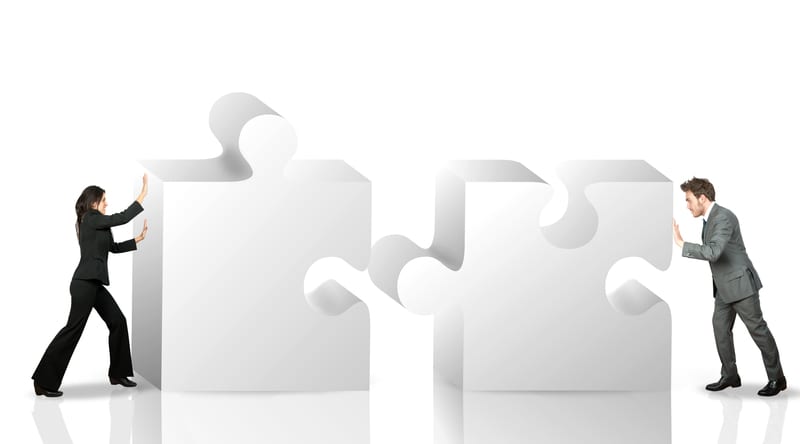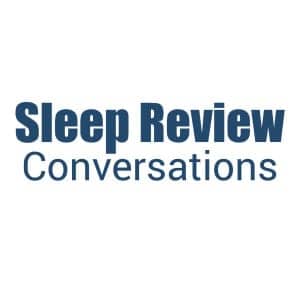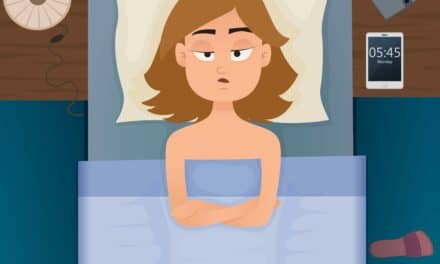As increasing numbers of dental sleep medicine practitioners employ home sleep testing devices with obstructive sleep apnea patients, a sleep physician and a dentist weigh in on how this market trend applies to their real-world practices. This episode of the “Sleep Review Conversations” podcast features a roundtable discussion with Jessela Tan, MD, FAASM, DABSM, DABFM, DABPM, and Kent Smith, DDS, D-ABDSM.
This episode is sponsored by Ez Sleep.
- In 2016, what is the ideal role for dentists regarding patients with obstructive sleep apnea (OSA)?
- Should we be applauding that dentists have home sleep testing (HST) devices readily available or worried that this indicates a growing divide between dentists and physicians?
- What if the patient needs CPAP, not an oral appliance?
- How do you use HST during the oral appliance titration process?
The opinions expressed in the podcast are those of the panelists and not necessarily those of Sleep Review.
Transcript Below
Sree Roy, Sleep Review editor (SR): Hello and welcome. You’re listening to “Sleep Review Conversations,” a podcast by healthcare media company Allied 360. I’m Sree Roy, editor of Sleep Review magazine and sleepreviewmag.com. Today’s episode is sponsored by Ez Sleep.
Today we’re asking the question: How can physicians and dentists use home sleep testing to work together, and not be driven further apart?
Increasing numbers of dental sleep medicine practitioners are employing HST—which is, home sleep testing, as it’s commonly known in the field—with obstructive sleep apnea patients. We’ve got on the line a sleep physician and a dentist to weigh in on how this market trend applies to their real-world practices.
Dr Jessela Tan, welcome, and please tell the audience a little bit about yourself.
Tan: Thank you. I am a board-certified and fellowship-trained sleep physician, and I see both adults and pediatric patients in my sleep practice. I also work closely with dentists to offer alternative options, or first-line options, for patients who have sleep apnea.
SR: We are happy to have you. Welcome also to Dr Kent Smith. Please tell us a little bit about yourself.
Smith: Well, thank you, Sree. I appreciate the opportunity to be here. I am boarded by the American Board of Dental Sleep Medicine and am president-elect of the American Sleep and Breathing Academy. I do a weekly radio show called “Pillow Talk” in the Dallas area, and I’ve been treating sleep apnea and snoring for a little over 20 years.
SR: Great. Thank you for joining us.
SR: Sleep medicine is relatively new as a specialty for physicians, and dentists being part of the team for OSA patients is even newer. In 2016, what do you see as the ideal role for dentists regarding patients with OSA? Dr Tan, let’s start with you.
Tan: Oftentimes, treatment for obstructive sleep apnea can involve providers from multiple specialties. Dentists should be a part of that multi-disciplinary team. Dentists can play a role in treating patients who have mild to moderate OSA, who can’t tolerate CPAP, or who don’t even want to use CPAP as a first-line treatment. Dentists can evaluate these patients and determine who are the ideal candidates for an oral appliance.
Smith: Yeah, I would agree. We see patients for an average of, I don’t know, about an hour each time they’re in. With our current healthcare model, most physicians don’t see them more than, say, 5 minutes or so. Sometimes you don’t even see the physician when you go into the office. So in my opinion, dentists are great gatekeepers for screening of the sleep disorders that we’re discussing today. I think, for that reason, more and more dentists should be getting involved in screening. Because we did studies 20 years ago, and 90% of the population was undiagnosed, and it’s not much better today.
Tan: I agree. I agree that dentists are in that position to screen for sleep apnea. Most dentists have a huge practice, and they can help with the screening, they can help with bringing awareness to sleep apnea, and treatments for sleep apnea.
Smith: I would say, in my practice, probably 80% to 85% of the patients that I see are those that have already been screened and tested by a sleep physician, or they’ve been at least tested and treated by a sleep physician. Maybe screened by the general physician, and then sent to the sleep physician. They’ve already tried CPAP, and they’ve become intolerant to it, or chose not to use CPAP. Not very often…actually, even though I’m in a dental practice, it’s unusual to start a patient in treatment that actually came from the dental practice. Maybe that’s because I’ve been doing this for so long, that most patients that have come through my practice have already been screened and tested.
Tan: I agree. Dr Smith has a good working relationship with sleep physicians, and I think that by having that relationship we can all treat the patients fairly well, and get them started on a treatment that they can tolerate.
SR: A recent Sleep Review survey of our dentist readership found that 59% of dentist respondents own at least one HST device. Another 10% said that they rent HST devices per month. And 9% indicated they outsourced to a dental HST provider. Should we be applauding dentists for having HST devices so readily available, or worried that this indicates a growing divide between dentists and physicians? Dr Smith, what do you think?
Smith: Well, certainly I think that we should be concerned. We don’t want to create that divide. I think maybe that starts with some good communication between dentists and sleep physicians. I don’t want that at all, and as Dr Tan mentioned, I do have good working relationships with sleep physicians in my area. I don’t know how many dentists do. But I also think that, as you mentioned, applauding dentists, in my opinion, should be a good idea, simply for activating HST with patients, regardless of how they do it. If I think this happens, because of the patient flow, and the number of dentists out there, it will increase the number of patients that are getting diagnosed, and therefore treated.
If we’re truly patient-centric, instead of being turf-war centric, at least in my opinion, that’s the way healthcare should be. For that reason, I do think that dentists should be screening, and should have HSTs available for those patients that refuse to go to a specialist of any kind, specifically a sleep specialist.
In dentistry, we do a lot of things. For example, if somebody has gum disease, it’s difficult to get that patient to go see a gum specialist. Roughly 30% actually go. I was having the same problem 20 years ago, when I tried to send patients to a sleep physician. Sometimes they went, but many times they didn’t. I think having HST at our disposal certainly helps get more patients screened, and therefore more patients treated.
Tan: As I’ve stated before, dentists are in a position to do this screening. As Dr Kent had mentioned, this will only bring awareness, and it will only bring more patients to be diagnosed with sleep apnea, and to be treated for sleep apnea.
However, I do have to add in there that dentists should be proficient and qualified to practice dental sleep medicine. The dentists who do practice dental sleep medicine have done the additional education and training to qualify. Most of these dentists can be found through the American Board of Dental Sleep Medicine, the American Sleep and Breathing Academy. I think that for anyone who is going to be in sleep medicine, they should have the additional training, and they should be proficient to do so.
Smith: I couldn’t agree more with Dr Tan. She took the words right out of my mouth. I think education is paramount, but you also have to combine that with ethics. I think there are some cowboys out there that are practicing without working through the sleep medicine community, and that’s not good; they’re treating patients without even getting sleep studies, without getting sleep studies read by the sleep physician, and that’s the last thing we want. That only harms the dental sleep medicine profession. Every dentist that’s doing this should have extensive education and should certainly know how to work with the sleep community, so that we don’t cause more harm than good.
Tan: Well said, thank you.
SR: Excellent, that was well said. We will discuss HST results, and oral appliance titration, after a short break for a word from our sponsor.
WORD FROM OUR SPONSOR:
Ez Sleep is a rapidly growing national provider of innovative sleep diagnostic services for the medical and dental community. We do much, much more than the average basic HST company.
We have created a movement to increase access to screening, testing, and treating OSA and improving quality of life.
Ez Sleep has board-certified interpreting physicians in all 50 states.
Contact [email protected] or visit www.ezsleeptest.com today.
SR: On to the next question for our panelists. When it is the dentist who discovers that a patient likely has OSA, sometimes the HST results will indicate that the patient is not a candidate for an oral appliance. In real life, how does this scenario typically play out? Dr Tan, can you share your experience?
Tan: Well, typically, when the HST result is interpreted by a boarded sleep physician, all treatment options for OSA should be placed, including CPAP and oral appliance therapy. If the results show that the patient has severe OSA, the first-line recommendation is usually to consult with a sleep physician, or an in-lab CPAP titration, or auto CPAP therapy. Or if it shows that patient didn’t sleep too much, then the recommendation is for a repeat sleep study.
Now, there are those patients who prefer to start with oral appliance therapy, but this needs to be discussed with the providers, whether it’s the dentist, who had initiated the sleep study, or the sleep physician, who initiated the sleep study. Good communication needs to be….There needs to be good communication.
Smith: Yes, we take a hard line in our practice, and if somebody does come in with severe apnea—this is assuming they’re not CPAP-intolerant already—we do our best to get them to see a sleep physician to get CPAP. Sometimes, they come in with the concept that CPAP is not for them, regardless of their diagnosis. There are more and more insurance companies now, though, that are demanding that you have a period of time where they’ve tried CPAP, and we’re having a harder time with those patients through insurance, who have not already at least tried CPAP.
Tan: That’s true, and then sometimes patients may need a combination therapy. Those patients who don’t tolerate CPAP may need an oral appliance, but due to the severity of their sleep apnea, the oral appliance alone is not sufficient. Often, we treat their sleep apnea, so a combination therapy of oral appliance and CPAP therapy could be instituted.
Smith: Yeah, we do see some combination patients. Not a lot, because that’s a lot for a patient to wear. But when it’s necessary, it’s necessary. Sometimes, the CPAP can’t quite get the AHI [apnea-hypopnea index] down low enough, and saturation levels are still not good. Sometimes, we start out with an appliance, and we can’t get the appliance to maximally treat their apnea, so combining it with the CPAP, at a lower pressure, is often an acceptable treatment for the patient.
Tan: Yes, I’ve had experience in a couple of my patients with that, and they were quite happy.
SR: Dr Smith, can you explain how you use HST, you’re doing the oral appliance titration process? Do you find that the HST results, especially those that are auto-scored by the device, are typically predictive of follow-up PSG results with the oral appliance?
Smith: Well, that’s a good question. I think when we’re talking about the milder categories, I don’t trust HST as well. If they come in, for example, they’ve been sent to me and their AHI was 9. I typically don’t do any kind of follow-up HST study with them, because the last thing I want to do is see an AHI of 11 after treatment because the patient loses a little bit of respect for their appliance. So the mild patients I’m not as likely to calibrate with HST. I usually get them to quieter, and feeling better, and then try and send them back for a PSG, or at least see the physician to see what kind of study that they would recommend.
If they’re more moderate or severe, then yes, I feel better about following them up. Now, with Medicare patients, we don’t use HSAT [home sleep apnea testing] at all. As dentists, we’re not allowed to do that. We do use pulse oximetry, just to measure their oxygen levels, and we can do that. But as far as non-Medicare patients, if they were referred by a sleep physician, then I also like to use pulse oximetry alone, because what I don’t want to do is send them back to the sleep physician after I’ve done an HSAT, where the patient then tells the sleep physician, “Oh, well I just did one of these/used one of these machines. Why do I have to do it again?” From a patient perspective, it wouldn’t make sense, as well as I want the sleep physician to get paid for their HSAT, and I’m afraid they might not get paid, if I just did one.
Tan: If it was done already, yeah.
Smith: Right. That’s something that wasn’t a concern in the past, but now that more HSTs are being done…And I don’t know what the market is now, is it maybe 80%, I don’t know what the numbers are….Has Sleep Review done any of those?
SR: I think it depends a lot of the region of the country and the insurers, but certainly in some parts of the country, it seems that the majority of patients are having HSTs and not in-lab PSGs.
Tan: Yes, I think mainly in the Northeast, I have seen that. With regards to home sleep testing results, they do have a good correlation with in-lab sleep study results. However, there are limitations. You really have to make sure that you do careful research as to the different types of home sleep testing devices that are being used out there. There are some HST devices that have a fairly accurate auto-scoring algorithm; however as a board-certified sleep physician, I would feel more comfortable if there was oversight of the home sleep study by a scoring tech and a board-certified sleep physician.
Smith: I agree. I will say, though, that sometimes we get patients from other patients, or they’re referred by a physician that doesn’t do HST at all. Sometimes, in those scenarios, I will calibrate the appliances with HST, until we get them to a maximum clinical effectiveness. The patient’s not snoring, or they’re at least making very little noise, and feeling better, if their fatigue levels have improved.
In all situations, I will then try to get the patient to return to a sleep physician, or at least go to a sleep physician then, for a follow-up study. Not always successful with that. There’s not a lot of motivation for the patient once they’re feeling better, but at least we try.
Tan: This is an example of a good working team, multi-disciplinary team that works well together. I think that sleep physicians and dentists can work hand in hand.
SR: Thank you both today for your insights on physicians, dentists, the relationship between the two, and home sleep testing for obstructive sleep apnea. Thank you to sponsor EZ Sleep. You can visit sleepreviewmag.com, and click on “Resources” for a transcript of this audio file, which will also include a link to the results of our “HST in the Dental Setting” survey. Thank you for listening to Sleep Review Conversations.









Should be encouraged